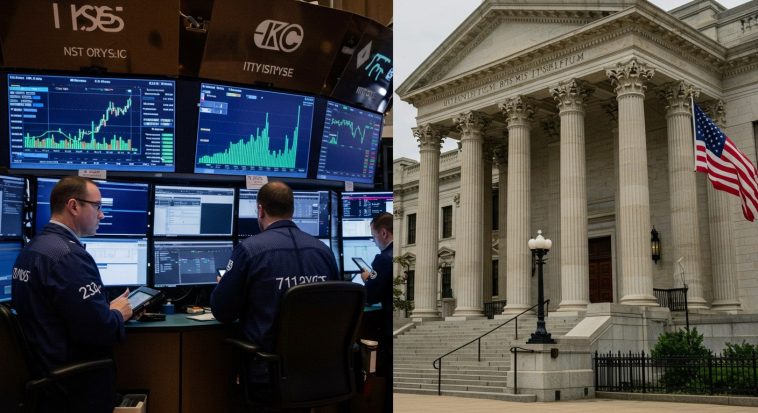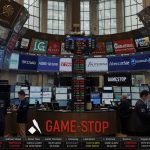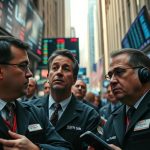Wall Street is feeling the pressure as uncertainty around tariffs from the Trump era continues to create waves.
This Week’s Temporary Boost
Just a few days ago, stock markets got a small lift when a U.S. court decided to block some of the major tariffs that were put in place during Trump’s presidency. This ruling halted what were called the “Liberation Day” tariffs, which had slapped a 10% tax on imports from nearly every country. On hearing this news, stock futures for the S&P 500, Dow Jones, and Nasdaq all shot up by almost 2%, suggesting that investors were hopeful.
However, that sense of relief didn’t last long.
“This isn’t a major turning point; it’s more like a brief pause,” pointed out Sarah Linton, a strategist with Beacon Bridge Capital. She noted that while the court’s decision was significant, the government’s aggressive stance on trade hasn’t really changed.
A Setback for Investor Confidence
Just when investors started feeling a bit more optimistic, another twist came along. A federal appeals court reinstated most of the tariffs that had earlier been invalidated. This news dampened spirits, and by Thursday the S&P 500’s rise was only about 0.3%. Tech stocks, particularly Nvidia, did manage to inch up by 3%, but overall, the momentum seemed to stall.
Ajay Rajadhyaksha, who leads Research at Barclays, explained that it’s unclear if this situation will lead to a warmer climate for investing. Without tariffs, the government may see a drop in revenue, which complicates financial planning and increases the risk of a larger deficit.
In simple terms, if there’s less money flowing into the U.S. Treasury, the government might have to borrow more. This can unsettle bond markets and push yields higher, which could eventually put pressure on stocks.
The Bigger Picture: Uncertainty Lingers
The real issue here goes beyond just the tariffs; it’s the confusion surrounding them that has investors worried.
“Markets can handle bad news, but when there’s too much uncertainty, that’s when things get tricky,” said Neil Dutta, who oversees Economics at Renaissance Macro. He believes this ambiguity can discourage businesses from investing or hiring, especially those that depend heavily on global trade. He also pointed out that the Federal Reserve might need to shift its attention from inflation to job trends as companies deal with this unpredictability.
What’s Next: Legal Maneuvers Ahead
While the recent ruling blocked one avenue for implementing Trump’s proposed “reciprocal tariffs,” experts say there are still several options available for the administration.
Alec Phillips, the Chief U.S. Economist at Goldman Sachs, wrote that even though this is a setback, it doesn’t change the bigger picture. He noted that Trump could easily shift to different trade rules to enforce similar policies. He still has the chance to implement specific tariffs, especially on steel, aluminum, and automotive sectors, and apply them more broadly.
So, while this decision has slowed down the pace of new tariffs, it hasn’t put an end to Trump’s protectionist trade approach. Many of America’s key trading partners might still face the threat of new tariffs down the line.
Navigating a Difficult Market
Through all the legal hurdles and fluctuating markets, analysts generally agree that clarity isn’t on the horizon just yet.
“There’s a lot of risk in the headlines,” said Linton. “Until we get more definitive guidance or policies, the market will likely continue to react based on court decisions, social media posts, and rumors about policy changes.”
For now, Wall Street is in a tough spot, trying to make sense of both the economic data and the uncertainty that shapes it.



